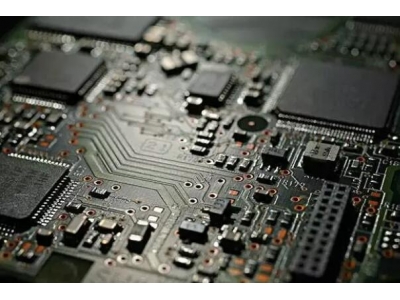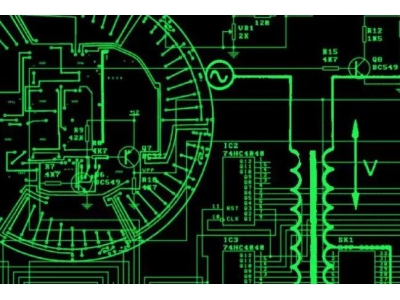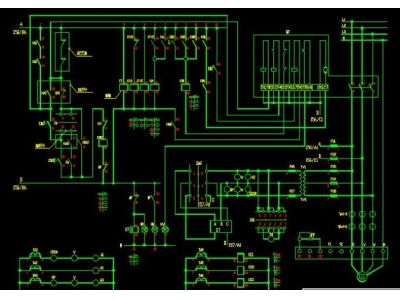求设计一个角速度传感器。 包括电路图和工作原理。?
一、求设计一个角速度传感器。 包括电路图和工作原理。?
个人认为角速度测量一般采用的传感器为光电编码器或者旋转变压器,如果使用光电编码器的话外围电路就比较简单,其输出信号为A相与B相脉冲信号,你只要将该信号电压调整好然后输入到单片机或者dsp中就可以计算出准确的速度。
二、可以画传感器电路图的软件?
电路图软件:proteus autocad protelvisio和edraw都可以画相关的电路图
三、压力传感器电路图原理讲解?
电阻应变片是压阻式应变传感器的主要组成部分之一。金属电阻应变片的工作原理是吸附在基体材料上应变电阻随机械形变而产生阻
变化的现象,俗称为电阻应变效应。
2、陶瓷压力传感器
陶瓷压力传感器基于压阻效应,压力直接作用在陶瓷膜片的前表面,使膜片产生微小的形变,厚膜电阻印刷在陶瓷膜片的背面,连接成一个惠斯通电桥,由于压敏电阻的压阻效应,使电桥产生一个与压力成正比的高度线性、与激励电压也成正比的电压信号,标准的信号根据压力
程的不同标定为2.0/3.0/3.3mV/V等,可以和应变式传感器相兼容。
3、扩散硅压力传感器:
扩散硅压力传感器工作原理也是基于压阻效应,利用压阻效应原理,被测介质的压力直接作用于传感器的膜片上(不锈钢或陶瓷),使膜片产生与介质压力成正比的微位移,使传感器的电阻
发生变化,利用电子线路检测这一变化,并转换输出一个对应于这一压力的标准测
信号。
4、蓝宝石压力传感器:
利用应变电阻式工作原理,采用硅-蓝宝石作为半导体敏感
件,具有无与伦比的计
特性。因此,利用硅-蓝宝石制造的半导体敏感
件,对温度变化不敏感,即使在高温条件下,也有着很好的工作特性;蓝宝石的抗辐射特性极强;另外,硅-蓝宝石半导体敏感
件,无p-n漂移。
5、压电式压力传感器:
压电效应是压电传感器的主要工作原理,压电传感器不能用于静态测
,因为经过外力作用后的电荷,只有在回路具有无限大的输入阻抗时才得到保存。实际的情况不是这样的,所以这决定了压电传感器只能够测
动态的应力。
四、光照传感器的电路图怎么看?
图纸左边是一个光电开关,右边是一个LED灯。 用灯照开关,照到照不到开关的状态不同。 把灯和开关面对面装,就可以检查中间有没有东西; 把灯和开关朝一个方向装(做成一个元件),对面放个反射物,可以检测传感器和反射物之间有没有东西; 把反射物贴在物件上(如果物件本身反射足够就不需要贴),传感器就知道前面有没有东西。
五、爆震传感器电路图怎么看?
1、传感器电路电压的检查。关闭点火开关,等待10s之后,拆下爆燃传感器的接头,测量车上线束接头上信号输出端子KS和信号回路端子SIC,RTN之间的直流电压,其值应符合规定,否则说明EEC-IV模块或线路有故障;
2、传感器功能的检查。其检查方法有两种:当发动机运转时,连接好传感器导线,缓慢地提高发动机转速至3000r\/min,同时用万用表交流电压挡测量。如果电压随之升高,则说明传感器可能有故障;
3、在发动机运转时,连接好传感器导线,用1209的锤子轻轻地敲击排气管,同时用万用表交流电压挡测量。如果电压指示值发生波动,则说明传感器可能有故障,发动机动力不足。
分享
六、谐振式传感器的工作原理?电路图?
主要是指电感、电容并联谐振组成的LC振荡器。
因为LC回路有选频特性。理由:回路的等效阻抗Z=(-J/ωC)//(R+JωL),可知,阻抗Z与信号频率有关。不同频率的信号电流(同等大小的电流)在通过回路时,产生的电压是不同的。只有一个频率的信号电流产生的电压最大,就是当信号角频率ω=ω0=1/√LC时。此时回路阻抗最大,叫做并联谐振。这种传感器的电路图,市面上是没有的,都是厂家掌握,怕你仿制。
七、传感器原理及应用需要电路图吗?
光有传感器还不能工作,至少需要有传感器信号采集电路。
这个采集电路和传感器本身有关,有些传感器的话很简单只要测量它的输出电压就可以,但是有些传感器是需要测量电容值的大小或则电感值的大小,这时他的测量电路就比较让人头疼了
八、电路图?
画电路图需要先找好图形绘制工具 与工具相结合 能更快 更好的提高工作效率 不耽误时间 现在市场上的亿图图示功能很强大 操作简单
九、称重传感器,怎么设计电路图使其显示,重量?
首先你得设计一个传感器电源,加到传感器上使它能输出0-20mV的电压,再设计一个运算放大器,把输出电压放大,随后设计一个AD转换器把放大的模拟信号转成数字信号,最后设计一个显示电路来显示它(可以用LED数码管也可以用LCD)。这其中要有一个单片机来帮助它们完成。
十、探照灯电路图
探照灯电路图: 理解、构建和优化探照灯
探照灯是一种广泛应用于舞台演出、户外照明和应急照明等领域的强光照明设备。在探照灯的核心部件之一是它的电路板,负责控制和供电。本文将带您深入了解探照灯电路图的构建和优化,帮助您了解探照灯的工作原理,并提供指导以构建高效可靠的探照灯。
了解探照灯电路图
探照灯电路图通常包括多个关键组件,如电源模块、控制模块、光源模块等。通过仔细研究电路图,您可以了解到这些组件之间的连接方式和信号传输原理。
在电路图中,常见的连接方式包括并联和串联。并联的组件同时接收相同的电压,但电流被分流到各个组件;串联的组件则依次接收电压,电流在各个元件之间相等。
此外,探照灯电路图中的控制模块通常包括变阻器、电位器和开关等元件,用于调节和控制亮度、色温等参数。
构建探照灯电路图
构建探照灯电路图需要具备一定的电子电路基础知识。以下是构建探照灯电路图的基本步骤:
- 确定探照灯的功率需求和光照要求。
- 选择合适的电源模块,确保其输出电压和电流满足探照灯的需求。
- 设计控制模块,包括亮度调节、开关控制和保护电路。
- 选择合适的光源模块,如LED光源。
- 根据电路图进行元件的连接和布局。
- 进行电路测试和参数调整,确保探照灯的性能符合要求。
优化探照灯电路图
优化探照灯电路图可以提高探照灯的性能和稳定性,延长其使用寿命。以下是一些优化措施:
- 选择高效能源: 选择高效的电源模块,以减少能量损耗和发热。
- 合理布局: 在电路板上合理布局组件,减少信号干扰和高温区域。
- 保护电路设计: 添加过流保护、过压保护和短路保护等保护电路,提高探照灯的安全性。
- 使用优质材料: 选择优质元件和材料,降低故障率和损耗。
- 热管理: 针对高功率探照灯,设计风扇散热模块,保持其正常工作温度。
结论
探照灯电路图是构建和优化探照灯的重要参考。通过深入了解电路图,您可以更好地理解探照灯的工作原理,并根据需求构建高效可靠的探照灯。优化探照灯电路图可以提高探照灯的性能和稳定性,延长其使用寿命。希望本文对您进一步了解和构建探照灯有所帮助。
Translated text in English: htmlFlashlight Circuit Diagram: Understanding, Building, and Optimizing Flashlights
A flashlight is a powerful lighting device widely used in stage performances, outdoor lighting, and emergency illumination. One of the key components of a flashlight is its circuit board, which is responsible for control and power supply. This article will take you through the understanding, building, and optimization of flashlight circuit diagrams, helping you grasp the working principles and provide guidance for constructing efficient and reliable flashlights.
Understanding Flashlight Circuit Diagrams
A flashlight circuit diagram typically consists of several essential components such as power modules, control modules, and light source modules. By studying the circuit diagram closely, you can understand how these components are connected and the principles of signal transmission.
In circuit diagrams, common connection methods include parallel and series connections. In parallel, the components receive the same voltage simultaneously, but the current is divided between them. In series, the components receive the voltage sequentially, and the current is equal between the elements.
In addition, the control module in the flashlight circuit diagram often includes components such as variable resistors, potentiometers, and switches to regulate and control brightness, color temperature, and other parameters.
Building Flashlight Circuit Diagrams
Building a flashlight circuit diagram requires a certain level of knowledge in electronic circuits. The following are the basic steps for constructing a flashlight circuit diagram:
- Determine the power requirements and lighting needs of the flashlight.
- Select a suitable power module to ensure its output voltage and current meet the requirements of the flashlight.
- Design the control module, including brightness adjustment, switch control, and protection circuits.
- Select a suitable light source module, such as LED light sources.
- Connect and layout the components according to the circuit diagram.
- Conduct circuit testing and parameter adjustment to ensure the flashlight's performance meets the requirements.
Optimizing Flashlight Circuit Diagrams
Optimizing flashlight circuit diagrams can improve the performance, stability, and longevity of flashlights. Here are some optimization measures:
- Choose efficient power sources: Select high-efficiency power modules to reduce energy loss and heat generation.
- Proper layout: Arrange components on the circuit board in a manner that reduces signal interference and high-temperature areas.
- Protection circuit design: Add protection circuits such as overcurrent protection, overvoltage protection, and short circuit protection to enhance flashlight safety.
- Use high-quality materials: Choose quality components and materials to lower failure rates and losses.
- Thermal management: Design fan cooling modules for high-power flashlights to maintain normal operating temperatures.
Conclusion
A flashlight circuit diagram is a crucial reference for building and optimizing flashlights. By gaining a deeper understanding of the circuit diagram, you can better comprehend the working principles of flashlights and construct efficient and reliable flashlights according to the requirements. Optimizing flashlight circuit diagrams can enhance performance, stability, and lifespan. We hope this article helps you further comprehend and build flashlights.





